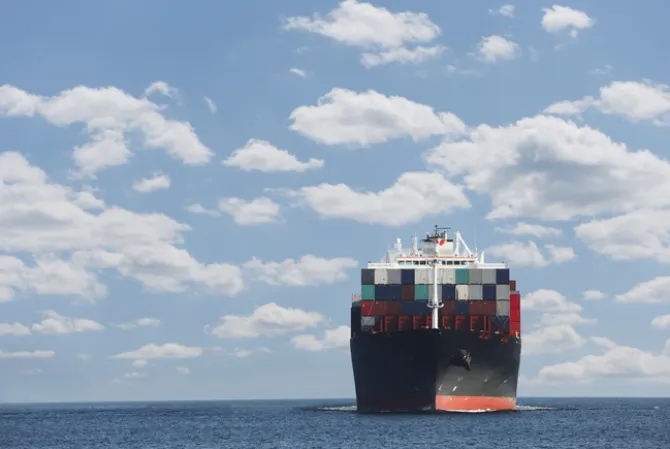
A day after a suspected drone attack on the MV Chem Pluto Liberian-flagged chemical tanker in the Arabian Sea on December 23, Yemen-based Houthi militants are said to have carried out a strike on a Gabon-flagged crude oil tanker. The Sai Baba, like Chem Pluto, was headed towards India when an armed drone struck it, reportedly the 15th attack by Houthi militants on commercial vessels in recent weeks.
The twin strikes have caused deep disquiet among regional states. Maritime forces in the Indian Ocean, though fairly adept at fighting pirates, have little experience dealing with drone attacks on civilian shipping. Many are unfamiliar with the radical tactics employed by the Houthis, in particular drone attacks. More worrying is the deniability factor in drone attacks. Neither the Houthis nor any other group has claimed responsibility for the attack on the Chem Pluto. The attack, many say, is a disquieting augury of more unclaimed drone strikes in the waters close to India.
Neither the Houthis nor any other group has claimed responsibility for the attack on the Chem Pluto. The attack, many say, is a disquieting augury of more unclaimed drone strikes in the waters close to India.
For its part, the Indian Navy (IN) is focused on identifying the source of the drone attack. Initial investigation of the debris recovered from Chem Pluto has hinted at the possible use of Iranian Shahed 136 loitering ammunition. The Shahed 136 is a variant of the Russian Geran-2 expendable drone, with a range of 2,500 km and a 50 kg warhead. The Houthis reportedly used this drone in the Yemeni Civil War in 2020. The finding is unlikely to convince the United States (US), which contends that the strike on Chem Pluto came from Iran. Washington claims Iran regularly conducts attacks on commercial vessels hundreds of miles away from its coastline, but that assessment does not align with other expert opinions. It seems unclear to many Indian observers what Tehran aimed to achieve by carrying out a strike on the Chem Pluto waters close to India, a country friendly to Iran.
India’s political and military leadership, while determined to find the source of the attack, remains understandably cautious. Earlier this week, at the commissioning of India’s latest guided missile destroyer, INS Imphal, Defence Minister Rajnath Singh, without naming possible culprits, underscored the government’s resolve to find the perpetrators. “We will find them from the depths of the seas and take strict action against them,” he asserted.
The minister's statement may give Indian shippers some confidence, but it does not detract from the difficulty of combating drones at sea. The main complication is the inadequacy of tactical countermeasures. The only effective technologies for defence against aerial drone attacks—jamming and spoofing—are unavailable to merchant ships. The difficulty is compounded by the fact that many anti-drone techniques are not known to work well in particular weather conditions. Jamming, in particular, is problematic as it has the potential to interfere with friendly communication systems. Spoofing, useful for confusing drone control systems, too, can sometimes lead to the target behaving erratically. Directed energy weapons such as laser systems and high-power microwave weapons are more effective in countering armed drones, but these technologies are expensive and inaccessible to many regional navies.
As some see it, the only viable option for India and other regional states, then, is to join the US-led coalition, the Combined Maritime Forces (CMF). The IN recently became a full member of the CMF and has exercised with coalition navies in the Western Indian Ocean. Of the five task forces the CMF operates, Combined Task Force 153—in charge of security in the Red Sea—is likely to lead Operation Prosperity Guardian. Observers say the IN could help coalition forces create a safe transit corridor with warships on independent patrols, sanitising the waters within. The effort’s success would hinge on its ability to create a safe zone stretching out from the Southern Red Sea to the Gulf of Aden and beyond.
The Houthis, of course, seek to exploit the complex geopolitics of the Israel-Palestine conflict to counter their opposition. The militants are likely to take advantage of the differences among world powers to venture further afield into undefended areas in the Indian Ocean, such as the Arabian Sea. Crucially, Houthi attacks are no longer limited to Israel-linked commercial ships. The MV Sai Baba targeted by militants in the Red Sea had no apparent Israeli connection.
Global powers recognise the urgency of mounting a viable response to the Houthi threat. The militant attacks have brought global trade to its knees. Ten of the top global shipping companies, including Hapag-Lloyd, Maersk, CMA CMG, and MSC, have suspended their services in the Red Sea, with more companies promising to follow suit. The US effort to reassure global shippers by forging a naval coalition to protect regional shipping is yet to properly materialise. Operation Prosperity Guardian, initially supported by over 20 countries, has, in recent days, seen France, Italy, and Spain withdraw, a significant setback for the coalition.
Political differences between major maritime powers notwithstanding, there is consensus around one issue: The collective unpreparedness of regional states to face the Houthi threat. Naval experts agree that the tactics and strategy of anti-drone warfare at sea are still evolving, and some methods of targeting drones are not as effective as commonly believed. Last week, US warships in the Red Sea claimed to have shot down 14 armed drones. It is yet unknown what weapons were used, but it is likely a long-range gun was employed in combination with missiles. Regional navies recognise that they lack the operational coordination and interoperability necessary to effectively counter the Houthis.
Political differences between major maritime powers notwithstanding, there is consensus around one issue: The collective unpreparedness of regional states to face the Houthi threat
And yet, there is a possible answer to the drone threat in the Western Indian Ocean. With improved situational awareness and better tools, maritime forces can tackle Houthi drones. At a minimum, regional navies need to step out of their comfort zones and up their operational game. The only realistic option for India and other Indian Ocean powers might well be to work alongside more able and willing partners.
Abhijit Singh is a Senior Fellow at the Observer Research Foundation
The views expressed above belong to the author(s). ORF research and analyses now available on Telegram! Click here to access our curated content — blogs, longforms and interviews.




 PREV
PREV


